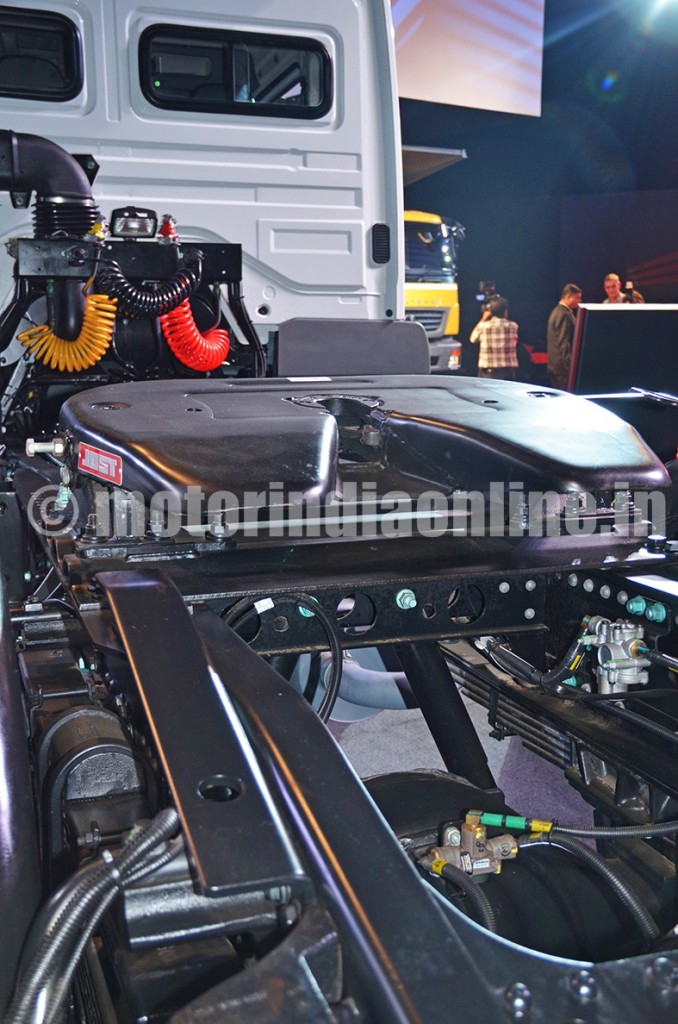Wake up and smell the coffee! The call was put out loud and clear, for under a decade, by the representatives of the automobile sector to the powers that be to separate the tractors and the trailers in order to give them unique registration numbers. The Ministry of Road Transport and Highways has finally issued an official notification making homologation, type-approval of trailers and safety critical connection components mandatory. The Automotive Research Association of India (ARAI), the officially appointed body to do the honours, has brought out the Trailer Code for all the concerned parties to follow. And that is exactly why JOST India’s Mr. G.S. Pradeep is in a buoyant mood.

Mr. Pradeep, Managing Director and Vice President (Sales & Marketing), JOST India, feels that it has come as a definite shot in the arm. Though in the offing, uncoupling the two may not come easy.
“The thought process was there to put trailers to test homologation and certify them in order to get them type-approved. The State Governments will have to give gazette notification to RTOs that trailers with homologation and Type-approval only can be registered,” elaborates Mr. Pradeep. The official cut-off date for the homologation to be done is in April 2016, but its strict enforcement may happen over another year or so.
It has, indeed, been a long journey for the crusaders of this mission, where till 2007 there was no code at all. Then, from 2007 to 2014, ARAI formed a panel, invited opinions and views and held meetings. JOST India, on its part, provided specifications, standards and test modules for the safety critical components category, besides wherever their help was sought.
The current trailer code defines the specifications to be used and the range of crash, load and other tests for the trailers. On the face of it, the code is all set to elbow out the unorganized manufacturers. Mr. Pradeep shares: “My claim is that there are around 800 trailer builders in India, of which only 10-15 are organized, 40-50 are semi-organized and the remaining are unorganized. This is an open secret. I am sure the Government does not want them to go out of business. I see consolidation of the semi- and un-organized segments as extra capacities for building trailers according to the Type-approved designs of the organized builders who will do the stress analysis, software simulations and the like. Then the industry will evolve, and no one is out of business too. But there will be fall-outs for those who cannot cope with this.”
JOST India was born less than a decade ago to cater to the auto component needs of Tata Motors. At the time, the tractor trailer segment stood at 10 per cent of the entire market, which has not changed much in the following years. Mr. Pradeep gives an insight: “When we supplied fifth-wheel couplings from China in 2005, we sold about 22,000 of them a year to Tata Motors while the total market was around 30,000. Even if there is an organic growth of 10 per cent a year, we should have had, say, roughly 60,000 tractors by 2013-14. But even today the market is still about half that size.”
The parent company, according to Mr Pradeep, has always been well aware of the delay in the expected boom. But they planned ahead armed with a clear strategy. Around the world, the company is present in the US, Europe, South Africa, Australia, Far East, Middle East and in China in Asia.
The road ahead is not smooth, both literally and figuratively. Mr. Pradeep states: “The volumes never grew to the extent that was projected and the trailer code was a major deterrent. The fleet owners would look at the tractor trailer combination only to carry higher loads but not in the light of interchangeability of tractor trailers. A tractor can carry one registered trailer with one unique number from point A to B. Then from point B, he could use the same tractor to lug a different trailer of a different number. Imagine the reduced turnaround time, and we are talking about a potential growth of the tractor trailer combination market from today’s 10 per cent to, say, 50 per cent in the next 5-7 years.”
JOST India, based in Jamshedpur, is spread over 15 acres, of which six acres is built-up and offers a capacity for manufacturing 70,000 fifth-wheel couplings. Employing about 150 people, including temporary workforce, the operation involves production of 25-28,000 couplings. Apart from fifth wheels the range of products includes axles, suspensions, kingpins, landing gear, slewing rings, hubodometers, hydraulic cylinder kits and steering systems for trailers.
Mr. Pradeep cites more deterrents: “In India, you may have a 40 ton tractor being pulled by an 180 hp engine, but in Europe it’s the other way round. Even if you have powerful tractors, the roads in India cannot support the speed. But the industry is up for a huge change. We are talking about the push-pull effect in the market. The pull effect comes from the fleet owners realizing the benefits of the trailer code implementation which, in turn, will push the OEMs to manufacture more tractors. If more powerful tractors are made, it will have the pull effect on infrastructure which will need to be improved, even if it means toll roads. The fleet owners will be willing to pay toll because good roads mean better mileage, longer life of the vehicle, reduced turnaround time and safer transport of goods”.
JOST India is ready to reap the delayed but much-promised harvest. He shares: “We have innovative products that India wants for the next 20 years. Our products are ECE certified in Europe, similar to the homologation that ARAI is bringing up, we know what specifications to drop for our products. Then, turnover-wise, it was Rs. 10-30 crores between 2008 and 2013. In 2013-14, it tripled. Then, in 2015, we closed at 50 per cent more than in 2014. We are looking at atleast 30 per cent more in 2016. We are getting the business that we actually envisaged 7-8 years ago. In the next 4-5 years, we will see an exponential growth.”
With the market waking up in India, are there any modifications to their products that JOST India is looking at? Mr. Pradeep answers: “None. China and Brazil are similar to Indian road operations. As China improved its infrastructure, its products were straightaway applicable here. But in India, the tractor trailer drivers need to learn how to operate the fifth-wheel coupling because they are almost never uncoupled. So, for them, to first start using a coupling, then to build electronics into that, and then to take advantage of that… therefore I say, we are years ahead of the market in India.”
JOST India conducts service campaigns across the country to educate customers. He says: “Our team collaborates with a dealer and offers conducting service campaigns which promote the idea of how to service the fifth-wheel coupling which in turn will be a pull for selling the spares which they get to buy from us. The local dealers are hungry and open to information because there is no organized player in the market.”
JOST India, for sure, is ready with a strong and competitive brew!


